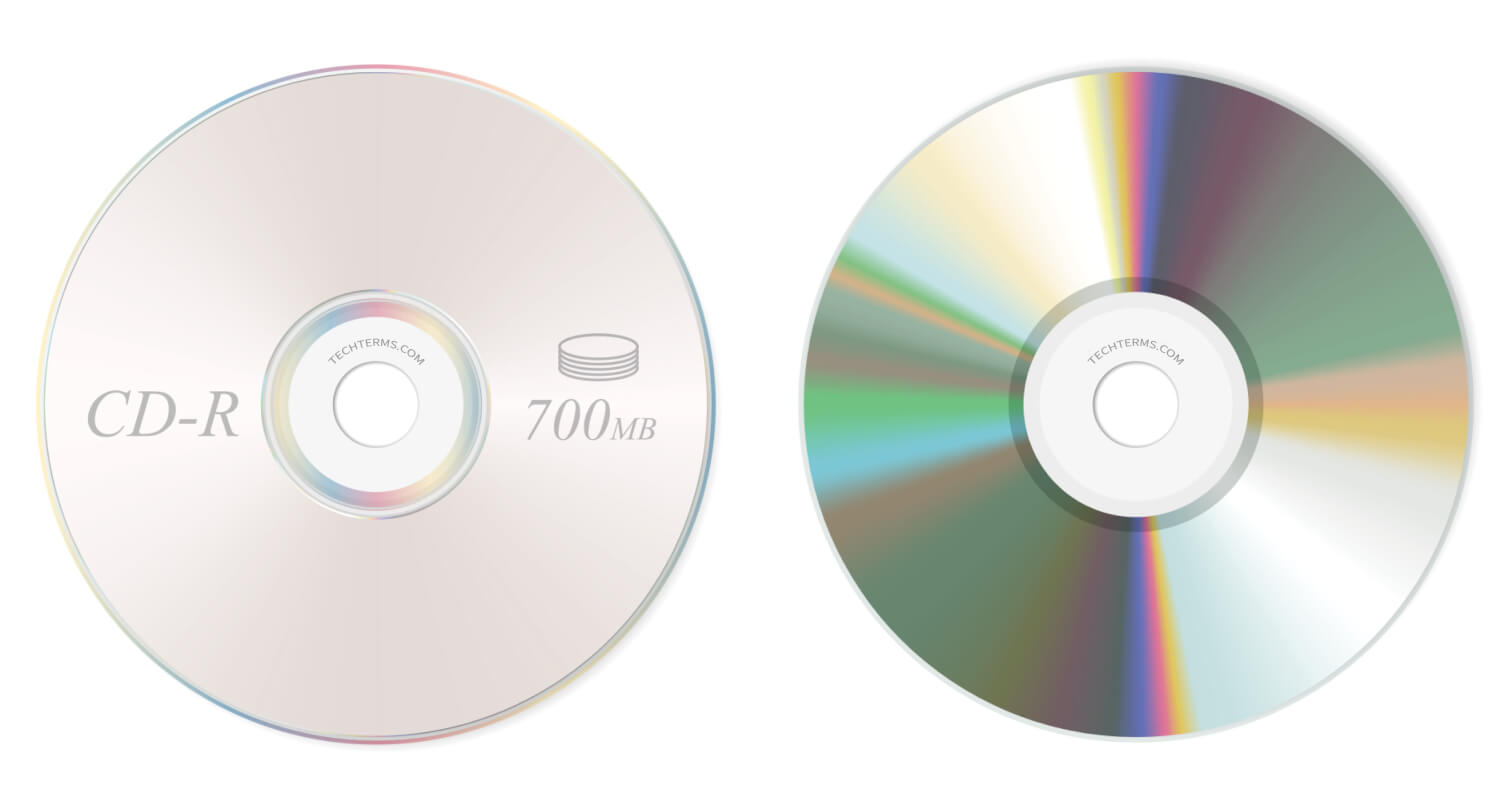CD-R
Stands for "Compact Disc-Recordable."
CD-R is an optical media storage medium that can hold up to 700 MB of data. The discs are used for backing up data, sharing multimedia, and general data storage. Unlike traditional CDs that are factory-pressed with pre-recorded data, CD-Rs allow users to write data onto them once, making them a convenient and cost-effective archival solution.
A CD-R disc is coated with a thin layer of dye and a reflective layer. When data is written, or "burned," onto a CD-R, a laser beam heats the dye, creating permanent physical changes that form pits (non-reflective) and lands (reflective) on the disc's surface. The pits and lands represent binary zeros and ones, which an optical drive can read as digital data.
One key advantage of CD-Rs is their compatibility with a wide range of devices, including CD-ROM drives, CD players, and standalone CD burners. You can use CD-Rs to create music CDs, software installation discs, sharable photo albums, and data backups.
Today, most PCs do not have optical drives, and CD-Rs are much less common than in the early 2000s. Newer data storage mediums such as flash drives and external hard drives read and write data faster and have much higher capacity.

 Test Your Knowledge
Test Your Knowledge